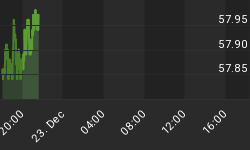The airline continues to be the testing ground for pandemic-related economic recovery, but it’s a tough barometer to grab a reading on, though Southwest Airlines’ return to profits, finally, has sparked a fair amount of optimism.
Rebounding with each holiday travel season, the industry would then suffer quite a few setbacks due to an increase of new cases, followed by further travel restrictions.
With air travel down 60% in 2020, and airline industry losses topping $370 billion, this was the hardest hit sector from the pandemic.
Most of the scenarios are along the lines that the airline industry will continue to suffer well into 2023 because of the pandemic. The worst-case scenario is that it won’t rebound to 2019 levels for three or four years.
Yet, U.S. airlines actually saw around 90% of their 2019 seat capacity in the past summer season and the recent holiday winter season.
The Omicron variant once again unleashed disruption on the airlines, leading to more than 20,000 flights being canceled and tens of thousands more significantly delayed over Christmas weekend. Aside from the problems caused by winter storms, Omicron forced airline workers to call in sick at record rates over the holidays.
Despite the odds, Southwest Airlines just posted a narrow $68 million profit for the fourth quarter of last year, mostly backed by a vacation travel rebound. During the same period a year earlier, it had a loss of $908 million.
The company earned 14 cents per share whereas analysts expected adjusted earnings of 7 cents per share. It also surpassed the revenue which more than doubled to $5.05 billion, where analysts forecasted $4.97 billion.
The airline said it expected to lose money in the first three months of this year but predicts it will be profitable for the remainder of 2022.
Alaska Airlines reported $18 million profit for the past quarter and gave similar outlooks for the remainder of the year. The airline posted revenue of $1.9 billion in the period, beating Wall Street forecasts of $1.84 billion.
JetBlue also reported fourth-quarter results but with a loss of $129 million as well as a revenue decline from 2019. The company reported net income of 56 cents per share and revenues of $2 billion.
All domestic airlines are focused on returning to profitability this year. Even though Omicron will continue to weigh on demand in the next two months, the industry is hoping for a strong spring and summer driven by rebounds in corporate and international travel.
For the rest of the year, industry executives are optimistic, expecting capacity to be down only about 5 percent in 2022 from 2019.
Despite the high percentage of bookings, costs are also on the rise. Airlines are currently offering extra pay to crews to help ease staffing shortages and that will likely continue for the rest of the year.
Other expenses will also increase 20% from 2019, up from a previous estimate of a 10% to 14% increase.
Additionally, jet fuel prices surged 60% through 2021 and that will surely contribute to further increase of airfare prices. For this month, published fares were up 9.7% compared to last January.

















